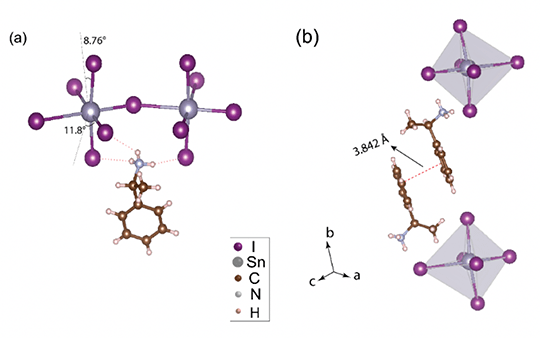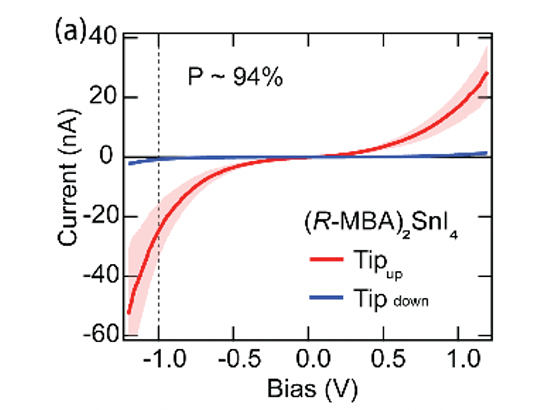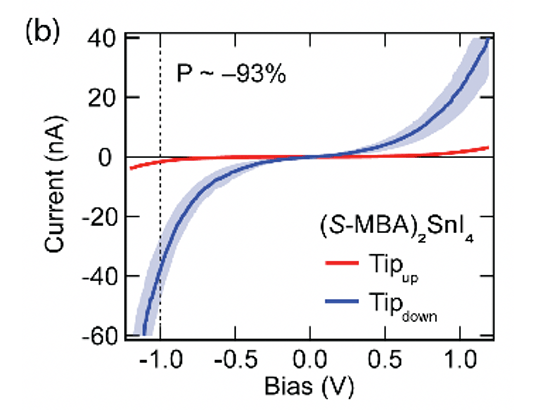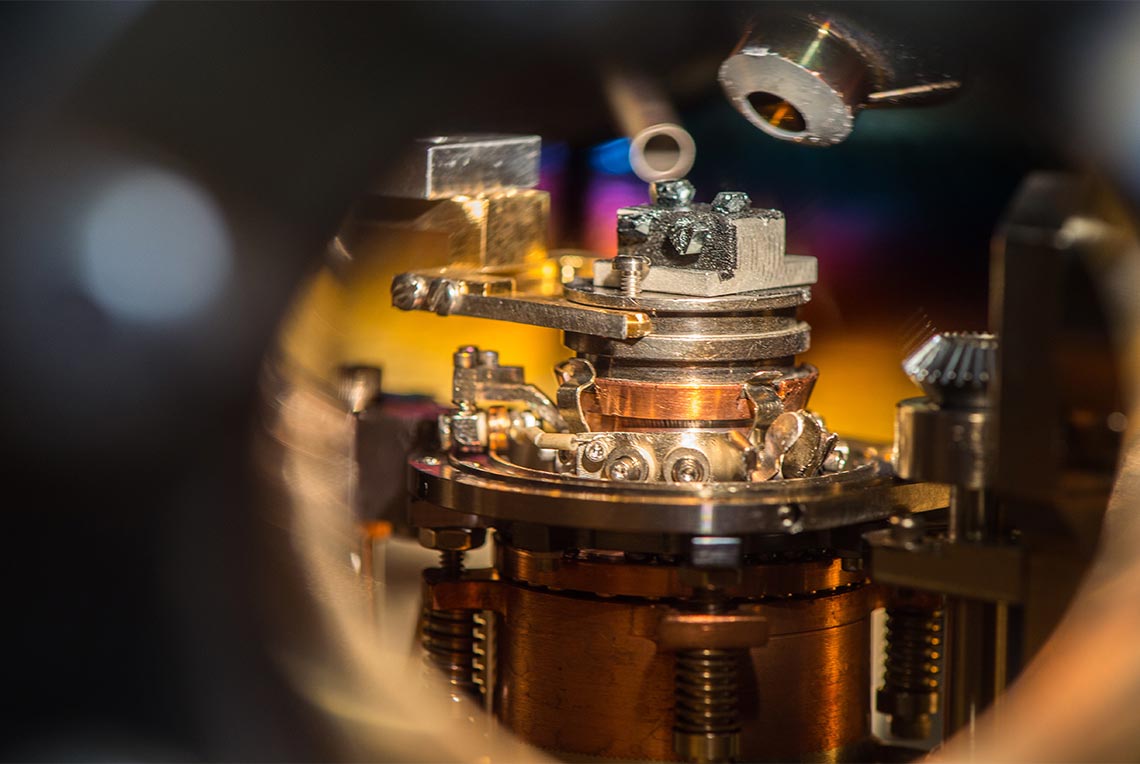Highly Distorted Chiral Tin-Iodide with Spin Polarized Transport
June 30, 2020
Oriented organic molecules within the 2D hybrid perovskite system can induce new functionality. Here we find that chiral molecules induce a large distortion of the Sn-I octahedra and induce spin-filtering for carriers transporting through the organic molecules.
Scientific Achievement
We synthesized chiral Tin-Iodide 2D perovskite layers with the largest distortion index caused by incorporation of the chiral ligand.
Significance and Impact
Inorganic/organic hybrid systems offer unprecedented opportunities for controlling the spin properties. The organic component in 2D layered perovskites can distort the inorganic component with changes to the properties of the resulting material system. Here, the Chiral-tin perovskite acts as an efficient spin-filter.
Research Details
- Synthesized single crystals of (R/S-MBA)-SnI4
- Explored solid solutions of Sn/Pb alloys
- Computed band structures and measured CD
- Measured spin-filtering effect
DOI: 10.1021/jacs.0c03899
Related People
Joseph Berry
National Renewable Energy Laboratory
David Mitzi
Duke University
Volker Blum
Duke University
Matthew Beard
National Renewable Energy Laboratory

The chiral organic compounds distort the Sn-I perovskite layer through hydrogen bonding and increased pi-pi stacking interactions.


The chiral perovskite layers filter the spins producing up to ~94% spin-polarized currents when passing vertically through the perovskite layers.









